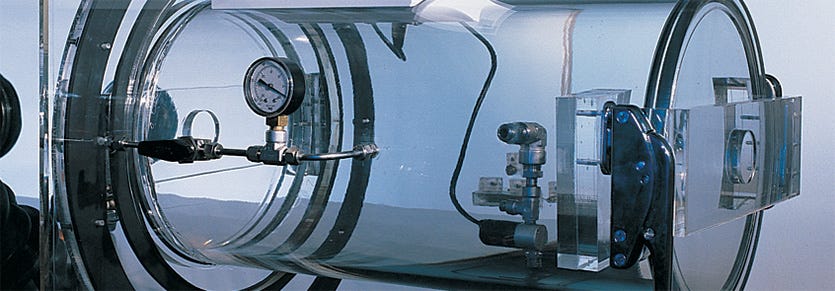When you need to measure a deep vacuum, accuracy is everything. Whether you’re working in a lab, running industrial processes, or just curious about how vacuum levels are tracked, knowing the best way to get precise readings can save you time and frustration.
You might wonder, “What’s the most reliable method to measure such low pressures? ” This article will guide you through the key tools and techniques that deliver the most accurate results. By the end, you’ll understand exactly how to measure a deep vacuum with confidence and precision.
Keep reading to find out what makes these measurements so tricky—and how you can get them right every time.
Table of Contents
ToggleTypes Of Vacuum Measurement
Mechanical gauges measure vacuum using physical parts. They are simple and easy to use. These gauges work well for higher pressures but struggle with very low pressures.
Ionization gauges are good for measuring deep vacuum levels. They use electrons to detect gas particles. These gauges are very sensitive and can measure very low pressures accurately.
Capacitance manometers use changes in capacitance to measure pressure. They provide precise readings over a wide range. These gauges do not depend on gas type, making them reliable.

Credit: www.achrnews.com
Challenges In Measuring Deep Vacuum
Measuring deep vacuumaccurately is tough due to several reasons. The sensitivity limitsof instruments make it hard to detect very low pressures. Many sensors cannot measure below a certain threshold, causing errors.
Contamination issuesalso affect accuracy. Tiny particles or gases inside the vacuum system change the readings. Keeping the system clean is very important but difficult.
Calibration difficultiesadd to the challenge. Instruments must be calibrated with standards that work at deep vacuum levels. These standards are rare and expensive. Calibration needs care to avoid mistakes.
Best Techniques For Deep Vacuum Measurement
Cold cathode gaugesmeasure deep vacuum by creating a glow discharge. They work well in very low pressure ranges. These gauges have no filaments, so they last longer. They are easy to maintain and give quick readings.
Penning gaugesuse a magnetic field to trap electrons. This increases ionization of gas molecules. They provide accurate measurement in ultra-high vacuum. Penning gauges are robust and can measure down to very low pressures.
Residual gas analyzersdetect the types of gases present. They measure vacuum quality by analyzing gas composition. These analyzers help find leaks and contamination. They are useful for detailed vacuum system monitoring.

Credit: www.terrauniversal.com

Credit: www.amazon.com
Frequently Asked Questions
What Device Measures Deep Vacuum Most Accurately?
A Penning gauge or an ionization gauge is used to measure deep vacuum accurately.
Why Is Deep Vacuum Measurement Important?
It ensures proper function in scientific experiments and industrial processes needing very low pressure.
How Does An Ionization Gauge Work?
It measures vacuum by ionizing gas molecules and detecting ion current to find pressure levels.
Conclusion
Measuring a deep vacuum needs precise tools and careful methods. Using the right instruments gives the most accurate results. This helps ensure safety and efficiency in many fields. Choosing proper techniques makes a big difference in measurement quality. Clear understanding leads to better control and improved outcomes.
Trust the best practices for reliable vacuum measurement every time. Accurate data supports good decisions and smooth operations. Keep learning and applying correct methods to get the best results.


